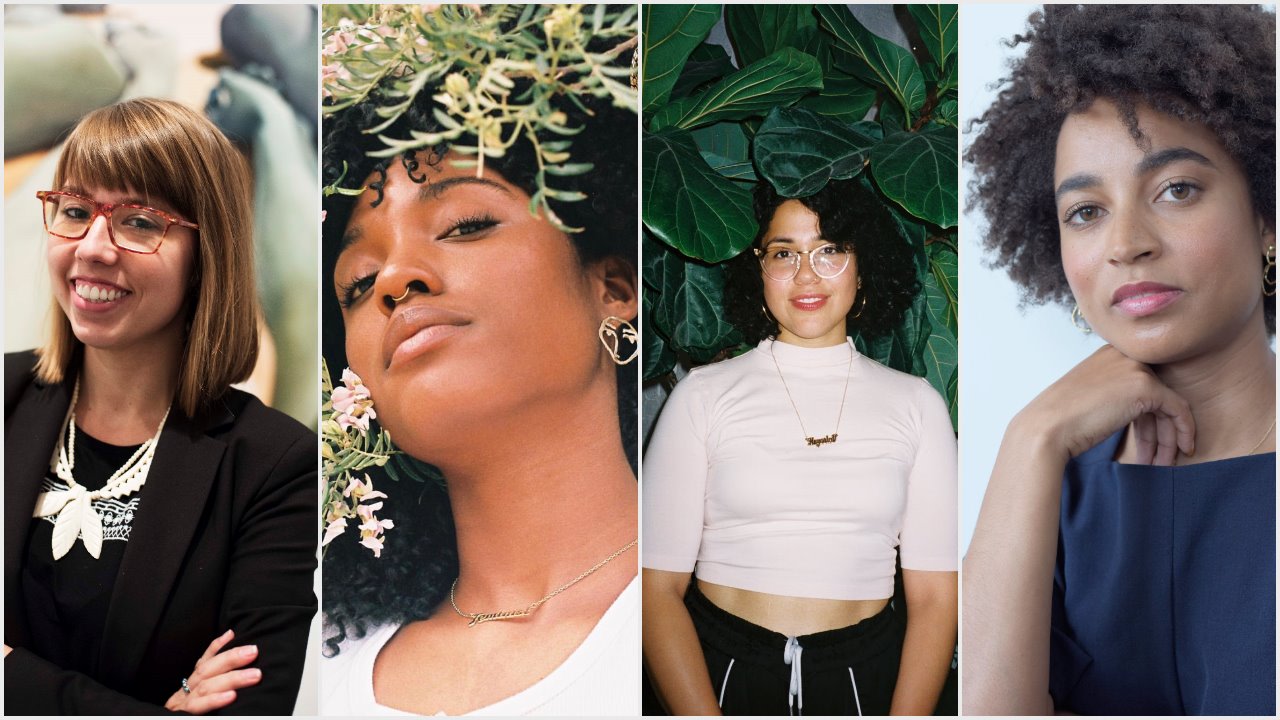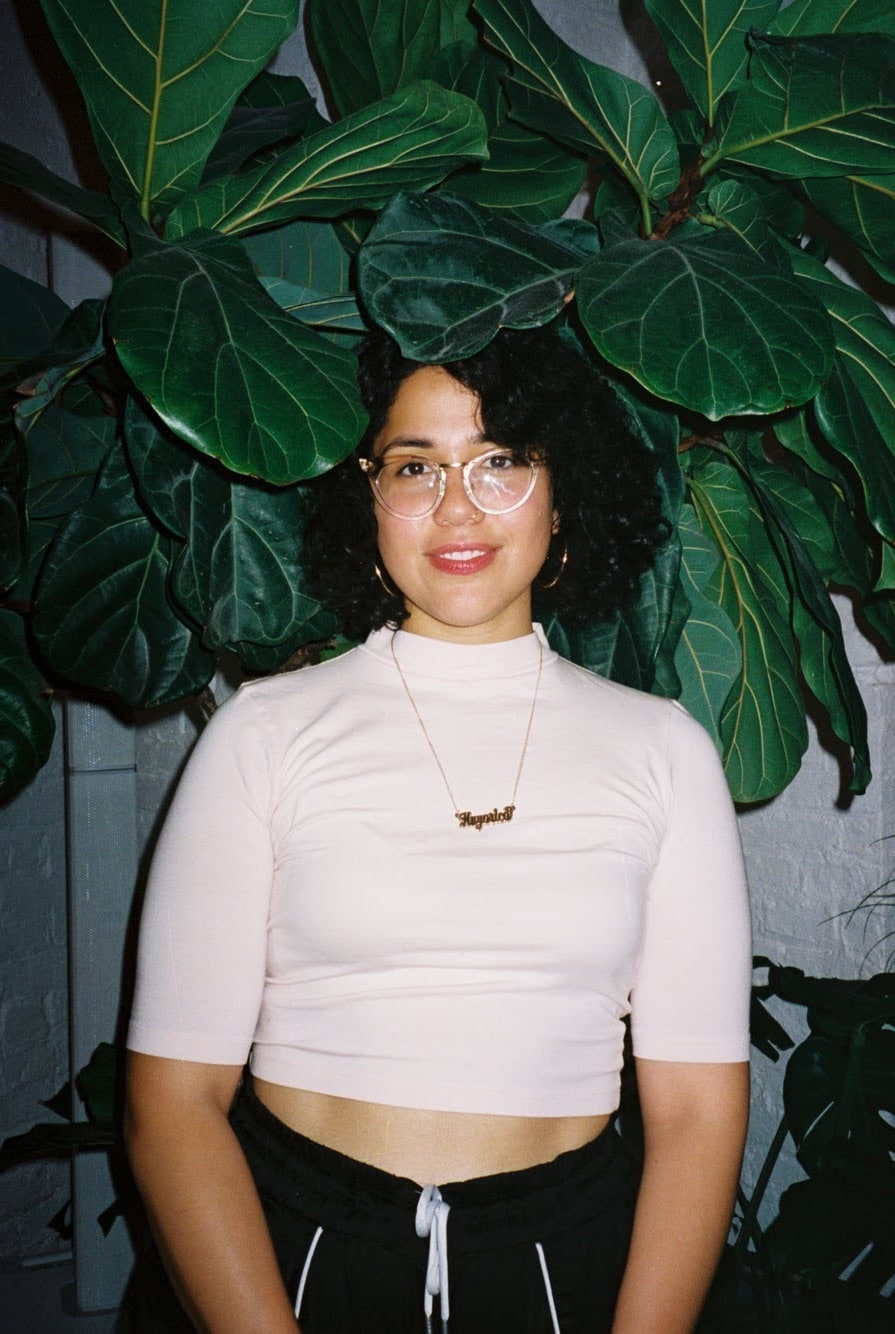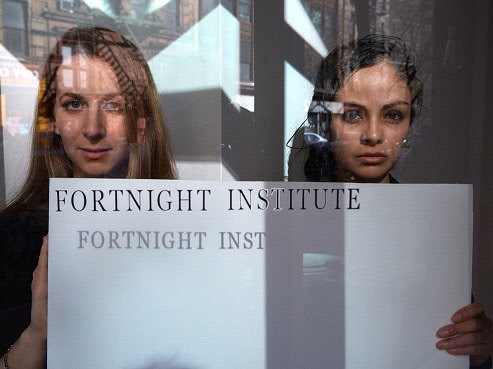 Left to right: Carmen Hermo, Gabrielle Richardson, Ali Rosa-Salas, Rujeko Hockley
Photos by Jonathan Dorado, Sabrina Scott, Ladin Awad, Jody Rogac
Left to right: Carmen Hermo, Gabrielle Richardson, Ali Rosa-Salas, Rujeko Hockley
Photos by Jonathan Dorado, Sabrina Scott, Ladin Awad, Jody Rogac
Out of all New York City's neighborhoods, the Meatpacking District ranks top on my list for no other reason than it is home to my favorite art museum, The Whitney. It's there I first saw "Flying High," a photograph of Brooklyn youth backflipping off of an abandoned mattress in the late '70s, and also where I heard Dev Hynes's alluring score to Easternsports, a meditative video installation by artists Alex Da Corte and Jayson Musson. Any time I’ve found myself without plans or overwhelmed with the ache to reconnect with myself, I come here, usually ending my visits spellbound, feeling both recharged and blissfully at peace.
But last winter was a little different. In February 2017, a friend and I took a visit to The Whitney to re-visit the exhibition Dreamlands. For the duration of our visit, we were cautiously followed around by three security guards. At first it was the standard checking to make sure we didn’t touch anything we weren’t supposed to, which evolved into them abandoning their posts to follow us into an exhibition room, encroaching nearer if we laughed or whispered in an otherwise quiet room. Uncomfortable, we left for a different room. At one point, I took off my heavy coat and carried it over my folded arms, which then led to one of the guards speaking into his walkie-talkie about a “possible disturbance” on the floor we were on. Heartbroken and vexed, my friend and I decided to cut our visit short. I left that night confused, seared with a sense of rejection from a world I had so much passion for.
I’ve since re-visited The Whitney, and many other New York City galleries, and although I’ve enjoyed several positive experiences following that night in February, I would be remiss in not acknowledging the stain it left on my view of the art world. Those three security guards forced me to be hyper-aware of myself in a sea of whiteness; hyper-aware of my womanhood in a sea of pretentious alpha-masculinity.
In the months since, I've turned my attention to the burgeoning number of N.Y.C. art institutions that are providing enriching alternatives to the mainstream. To find out more, I spoke with eight curators showcasing work by artists who are traditionally left out of the canon of popular contemporary art. We talked about the importance of building communities that welcome and celebrate everyone, regardless of status or background, and what the art world could — and should — be doing more of.
Ali Rosa-Salas
Director of Performance Programs, Abrons Arts Center
 Photo by Ladin Awad
Photo by Ladin Awad
What inspired you to start a career in art curation?
I trained really seriously [in dance] — I went to The Ailey School — I lived that whole life thinking I was going to dance professionally. When I got to undergrad, it was the first time I was beginning to actually see [artwork] in New York City as a young adult. I became more interested in who was making those decisions around the “who” and “what” of what I was seeing, and I realized that that’s a really political decision. I was noticing that the kinds of aesthetic practices, the identity affiliation of artists, for lack of a better term, wasn’t really representative of the different kinds of art practices of people I was surrounded by. [Becoming a curator] was a way for me to stay intimately connected to performance and the creative process but not necessarily be performing.
What does the art world need to do more of?
The art world needs to reckon with its own power. I’m of the belief that art is political and everyone involved in the process of the production of whatever we determine to be called art — whether it’s the artists themselves, the curators, the producers, the facility staff, the security staff — is mutually entwined and dependent on one another to make something happen. If there’s an acknowledgment of interdependence that we all need each other to do this thing that hopefully we all believe in, then I hope that would result in people valuing one another more. And I’m speaking about value in a fiscal sense with people being compensated for their labor, and then also in an emotional psycho-social sense with acknowledging the ways in which we are all entwined and implicated.
And what does it need to do less of?
I would be much more interested in collaboration and how institutions, artists, and funders can be working together more collaboratively to support the production of contemporary art rather than pitting artists, institutions against one another in competition for resources. I would say less of that because there’s really more than enough to go around.
Miguel Bendaña and Sam Lipp
Artists and Dealers, Queer Thoughts

What inspired you to start a career in art curation?
Miguel Bendana: I guess it kinda happened naturally.
Sam Lipp: We’re both artists.
Bendaña: Queer Thoughts was founded in 2012 in a third-floor apartment in the Pilsen neighborhood of Chicago. Because we are both artists and were living in the Pilsen neighborhood at that time, the gallery began as a natural space where we could exhibit our peers and friends from abroad.
What does the art world need to do more of?
Lipp: I think we should spend more time in spaces. There’s kind of like this hyper-dense schedule in the art world now between the art fairs and doing things online, so we should spend more time creating exhibitions.
And what does it need to do less of?
Bendaña: Less art fairs. Going back to what Sam said, it’s just you’re viewing art so quickly. We love art fairs, but it’s just a lot to look at so quickly.
Don’t miss: Hannah Quinlan and Rosie Hastings, Queer Thoughts Gallery, March 2018.
Fabiola Alondra
Gallerist and Book Publisher, Fortnight Institute
 Fabiola Alondra (on the right), with her partner Jane Harmon
Photo by Balarama Heller
Fabiola Alondra (on the right), with her partner Jane Harmon
Photo by Balarama Heller
What inspired you to start a career in art curation?
Before fully realizing that I would choose a career in art, I was always more interested in Archeology & Anthropology. I was born and raised in Mexico City where one of my favorite museums to visit was the Museo Nacional de Antropologia — it remains my favorite museum when I am back in Mexico City. After taking a class in art history as a freshman in college, I knew I wanted to focus on art. It was only when I was a graduate student in London that I knew I wanted to work in the field of contemporary art and open my own space one day. I was inspired by London’s spaces, such as Raven Row and organizations such as Artangel. I met my partner Jane Harmon while in graduate school and fast forward to the present, we now have our very own space in N.Y.C.'s East Village, Fortnight Institute.
What does the art world need to do more of?
The art world needs more spirit and flame, more vitality. Through Fortnight, we strive to maintain an ardor for collaboration and community among a diverse group of creative people. It's also important to have conversations with people in other fields, such as science and literature. This interconnectedness adds force to an otherwise insular New York art world. The art world needs to be more radical. An art world that moves and shakes beyond its current confines and is able to reach outside its own "world."
And what does it need to do less of?
Less patriarchal structures, less pretentiousness, less discrimination. [It needs to be] less sexist, less conservative.
Don’t miss: THE SPIRIT OF THE PEOPLE WILL BE STRONGER THAN THE PIG’S TECHNOLOGY, organized in collaboration with Arthur Fournier, now on view through December 10.
Carmen Hermo
Assistant Curator, The Brooklyn Museum
 Photo by Jonathan Dorado
Photo by Jonathan Dorado
What inspired you to start a career in art curation?
I grew up in New Jersey, so I have many fond field trips into the city to see museums like the Metropolitan, which was inspirational to me growing up thinking about beautiful, wonderful things of the world. I didn’t really realize one could go into a career in the field until I started my undergraduate studies, took an art history class for fun, then had a professor reach out to say, “Your essay was really strong, have you considered pursuing this?” I didn’t know what the jobs would be like in a museum, but it sort of unfolded from there. I realized rather than doing research, I wanted to be someone who was involved with translating artists’ works for the broader public. I love to connect with people over the works and ideas that artists bring to share with all of us.
What does the art world need to do more of?
A lot of museums, especially here in New York, have been obviously making very direct attempts to diversify their programs to show women artists, to bring in artists of color for solo exhibitions and not just group exhibitions, and I think more of that is needed. I also think, on the other side of the scale, we need to remember that with shows that seem “neutral” and “traditional,” it’s healthy to check yourself and say “This exhibition of minimalist art from that period is actually an exhibition of white male art,” as that’s also an identity. It sometimes feels like race and gender subjects carry this weight of identity when really art has been a frame of identity for so long. New York especially has been a site of showing these classic, white male — “genius” — artists without that kind of language around it.
And what does it need to do less of?
Now, that it’s gala season, I realize we all need to fundraise; it’s a huge part of life. And I’m also like, Man, I need to go to more studio visits and less celebrations, but celebrations are good! Especially in this time, we need to celebrate the good of what we’re all doing.
Don’t miss: Radical Women: Latin American Art, 1960–1985, April 13 - July 22, 2018.
Rujeko Hockley
Assistant Curator, The Whitney Museum
 Photo by Jody Rogac
Photo by Jody Rogac
What inspired you to start a career in art curation?
I went to Columbia here in the city, and I was an art history major. I really liked it, but I didn’t exactly think of it as a career. I applied for lots of different types of jobs and I ended up getting a curatorial assistant job at The Studio Museum in Harlem. Prior to that, I don’t know that I necessarily thought that it was going to be my profession — I didn’t really know what a curator was when I was in college. So [I was inspired by] getting that job, going to actually work at a museum, and seeing firsthand what it was like to work in a museum and to contribute to exhibitions by observing my bosses Thelma Golden and Christine Kim.
What does the art world need to do more of?
I think like all industries we have to reckon with the ways of thinking that are passed down to us without real consideration — whether that be on the individual basis or on a structural, societal basis — and how they inflect the work that we do, the way in which they impede into the kind of work that we want to do, the kind of conversations that we want to have. It comes down to questions of power, and that can be power between individuals, power between ethnic groups, power in terms of wealth. We need to have these conversations in society. [The art world] is not any different.
And what does it need to do less of?
I think that we could stand to see ourselves as less different or separate or special than other sectors of the world. It’s really important that we be cognizant of the fact that we are of the world and that we have the same issues, the same challenges as government, politics, the fashion industry, publishing, etc. The exceptional nature of the way the art world kind of wants sometimes to set itself apart — and I don’t actually think that a lot of people think this way — is not something that I personally think is very productive or interesting. We’re part of the broader world, and we need to acknowledge that.
Don’t miss: An Incomplete History of Protest: Selections from the Whitney’s Collection, 1940–2017, on view now.
Gabrielle Richardson and Jheyda McGarrell
Curators, The Art Hoe Collective
 Photo by Sabrina Scott
Photo by Sabrina Scott
 Photo by Jheyda McGarrell
Photo by Jheyda McGarrell
What inspired you to start a career in art curation?
Gabrielle Richardson: I’ve always been interested in art since a young age and started my career in art curation when I was in high school. My friends and I would raise money and have pop up art galleries and shows in our city showcasing the works of young artists in Philadelphia. As a unit, I think we have moved importance away from objects and more into experiences, and I think that it reflects into the work being made today. We have let a lot of problematic and fetishistic art infiltrate spaces for the sake of tradition and beauty. Younger artists, especially artists of color, are holding themselves and others more accountable for the content of their work, and I want to do what I can to continue that. Art Hoe Collective itself was born out of a need for accountability in the arts, a need for accessibility, a place for young artists of color to grow who weren’t given a platform for their work.
Jheyda McGarrell: My freshman year of college, I had a professor who was a curator at the New Museum. The introduction of him into my life really gave me the accessibility to the knowledge of curating, the terminology, and the recognition of its importance. Before this happened, I was just a kid who was extremely fascinated in media, representation, and the adverse effects of not having accessibility to content that provides you with artistic satisfaction. The two combined has inspired me to curate with the set intentions of curating content that will provide people, who similar to me, are seeking a reflective view of their own experiences and bodies, with content I respect and believe will inspire others.
What does the art world need to do more of?
McGarrell: I think the art world needs to give more people opportunities. So much of the disparity between popular artists and extremely talented, commercially unsuccessful artists of color is simply the opportunities and access provided to the two. A specific example of this for me is rich white male photographers who have assaulted models yet continue to be provided the opportunity to shoot for large publications. If the job had been given to a lesser known artist it would provide them with the opportunity of gaining a larger platform for POC, monetary stability using their art, etc. If more people with the power to make these decisions put in more effort to discover new talent and take a leap of faith just by giving young newcomers equal opportunities or larger scale paid opportunities, I believe we would experience an inspiring upwards shift in overall content production and subject matter.
And what does it need to do less of?
McGarrell: The art world needs less of a dependency in “highlighting marginalized groups” and more of allowing these groups to represent themselves. Considering that a large number of opportunities that marginalized people do get to interact with media and popular culture are unpaid opportunities, it does not allow for genuine representation or even genuine connection between the subjects and the viewers. So I think in general, it needs less of exploiting marginalized bodies for a profit while not investing in our careers or ideas or giving us room to grow.
Richardson: I think the art world needs to give less importance to formal institutions. Art can do so much more than hang in a museum; it can heal and and unlock doors for people who may not even have realized there was a door for them in the first place. Relying solely on museums and universities to label the importance of art is classist and inaccessible. There are so many community based art groups that teach and help foster critical thoughts surrounding art and our consumption of it. Art should be a community that relies on each other and less of a class system.